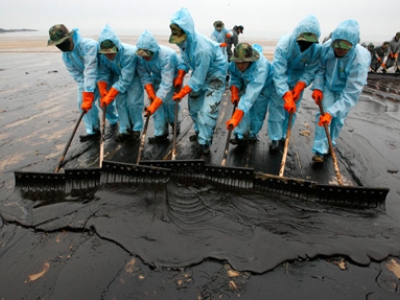The Deepwater Horizon oil spill, which began on April 20, 2010, is one of the most catastrophic environmental disasters in history. Technology played a dual role during this incident: it was both a contributor to the disaster and a critical tool in the response efforts. This article explores how technology influenced the events leading up to the spill, the response to the crisis, and the subsequent recovery efforts.
Understanding the Deepwater Horizon Incident

The Deepwater Horizon was an offshore drilling rig operated by Transocean and owned by BP. It was drilling an exploratory well in the Macondo Prospect in the Gulf of Mexico when a blowout occurred. This blowout led to a catastrophic explosion, which resulted in the deaths of 11 workers and the release of approximately 4.9 million barrels of crude oil into the Gulf over 87 days.
Technological Failures Leading to the Disaster
The incident can be traced back to several technological failures that contributed to the blowout. Understanding these failures is crucial to recognizing the complex interplay between technology and safety in offshore drilling.
Inadequate Blowout Prevention Systems
One of the primary technologies involved in drilling operations is the blowout preventer (BOP), a critical safety device designed to seal the well in the event of an uncontrolled flow of oil or gas. In the case of the Deepwater Horizon:
- The BOP failed to function as intended, which was attributed to multiple design flaws and maintenance issues.
- Investigations revealed that the BOP had not been properly tested and was inadequately maintained, leading to its failure during the blowout.
- The design of the BOP was also criticized for being outdated and not robust enough for deepwater drilling conditions.
Inaccurate Data and Monitoring Systems
Another significant factor was the reliance on real-time data and monitoring systems that proved to be inaccurate or insufficient:
- Transocean’s crew relied on sensor data to monitor the well’s pressure and stability, but the systems failed to provide complete and accurate information.
- The decision to proceed with drilling was based on misleading data regarding the well’s stability and pressure, which did not adequately capture the risks involved.
Technological Innovations in Crisis Response

Once the blowout occurred, technology played a vital role in the response efforts. Several innovations were employed to contain the spill and mitigate its environmental impact.
Remote Operated Vehicles (ROVs)
ROVs were crucial in assessing the situation underwater and carrying out tasks that were impossible for human divers:
- These unmanned vehicles provided real-time video feeds and data from the seafloor, allowing responders to monitor the leak effectively.
- ROVs were deployed to install containment domes and other devices to capture the leaking oil, although initial efforts were hampered by the challenging underwater conditions.
Top Kill and Junk Shot Techniques
Two notable techniques were attempted to stop the flow of oil:
- Top Kill involved injecting heavy drilling mud into the well to counteract the pressure of the oil. This technique, however, ultimately failed due to the well’s complexity.
- The Junk Shot method aimed to clog the well with materials like golf balls and shredded tires. Although this technique showed some promise, it too failed to permanently seal the well.
The Role of Technology in Environmental Recovery
After the immediate crisis, technology continued to play a crucial role in assessing and mitigating the environmental damage caused by the spill.
Satellite Imaging and Aerial Surveillance

Satellite technology and aerial surveillance were essential for monitoring the spill’s spread and assessing the environmental impact:
- Satellite imagery provided a broad view of the oil slick, helping responders understand its movement and potential impact on coastal ecosystems.
- Aerial surveys allowed for real-time assessments of the spill’s effects on wildlife and habitats, enabling targeted response efforts.
Bioremediation Technologies
In the aftermath of the spill, bioremediation became a focal point in recovery efforts:
- Microbial technologies were employed to enhance the degradation of oil in the environment, utilizing naturally occurring bacteria that consume hydrocarbons.
- Innovative methods, such as the application of fertilizers to stimulate microbial growth, were used to speed up the natural degradation process.
Lessons Learned and Future Implications
The Deepwater Horizon incident underscored the importance of integrating technology with safety and risk management practices in offshore drilling. Several lessons emerged from this disaster:
Investing in Rigorous Testing and Maintenance
Ensuring that critical safety equipment, like BOPs, is tested and maintained rigorously is paramount:
- Regulatory bodies must enforce stringent standards for the design, testing, and maintenance of blowout prevention systems.
- Regular audits and inspections should be mandated to ensure compliance with safety protocols.
Improving Data Accuracy and Decision-Making
Enhancing the accuracy of data from monitoring systems is essential for informed decision-making:
- Investments in advanced sensor technologies and real-time data analytics can improve the reliability of information crucial for assessing well stability.
- Training personnel to interpret complex data more effectively can lead to better decision-making under pressure.
Leveraging Technological Innovations for Environmental Protection

Ongoing investment in innovative technologies is essential for improving response capabilities:
- Developing more advanced ROVs and containment technologies can enhance response efforts in future incidents.
- Research into bioremediation and other environmental recovery techniques should continue to mitigate the impact of spills.
The Deepwater Horizon incident serves as a poignant reminder of the complexities and risks associated with offshore drilling and the critical role technology plays in both contributing to and mitigating disasters. While technological failures were a significant factor in the lead-up to the disaster, innovative technologies also played a vital role in responding to the spill and aiding recovery efforts. The lessons learned from this incident emphasize the need for continuous improvement in safety practices, data accuracy, and technological advancements in the oil and gas industry. As we move forward, it is imperative that the industry adopts a proactive approach to ensure that technology serves as a safeguard rather than a liability in the pursuit of energy resources.